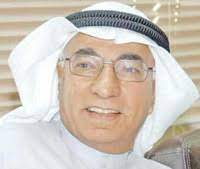23/09/2023
1184 times read
23/09/2023
1184 times read
With oil prices reaching the $90 level, consumers’ prices are heading towards a higher level in almost every sector. These are either based on speculations and anticipation or aimed for protection against future higher oil prices. Irrespective of whether such an increase happens or not, the higher price will be the main. Meanwhile, consumers will put the blame on OPEC+, making it the main culprit. OPEC+ had to act to preserve its annual income of oil, and expenditure, and protect its capital project. While oil prices were static and with more oil coming from non-OPEC+ resulting in a weakening of oil value globally, it had to act fast by calling for a reduction in oil production from all its members.

However, such an action did not move the oil prices upward as much as expected. Hence, the biggest members Saudi Arabia and Russia took it upon themselves to make a combined voluntary cut of 1.5 million barrels per day, which was later reduced to 1.3 million because of Russia’s need for more sales of its oil to balance and increase its intake of foreign currency, something that it desperately needs due to its war against Ukraine. The current voluntary cuts will remain in place until the end of this year. OPEC+ might extend the reduction depending on whether the level of oil prices will reach $100 a barrel by the end of the year.
On the other hand, the USA and the West were advocating and encouraging all industries to move away from shale oil and to invest in alternatives. Now a new outlook is emerging that is delaying such actions for a few more years. There is a new turn towards investing in finding new oils, due to the challenges facing alternative sources of energy for being more expensive and not giving the anticipated results. Fortunately for global oil consumers, OPEC+ did not stop and continued to invest more and more in shale energy, which actually cost more money and expenses. Even though it eventually turned out to be a more expensive oil price, it is being invested due to the tightness and shortage in oil supply.
Through this, OPEC+ aims to avoid causing panic in the oil markets. Demand is still looking rosy, with the current rate being 101.5 million barrels per day, and this is expected to grow further by a small amount next year. In any case, Iran can pump and produce more oils despite sanctions, delighting oil consumers globally. Oil supply is tight with restrictions and voluntary cuts, but OPEC+ is aware that a price level of $100 may hurt its consumers, due to which it can relax supply, as long as oil prices give them the proper return on new oil investments, and cover annual budgets with a breakeven balance sheet.
By Kamel Al-Harami
Independent Oil Analyst
Email: [email protected]


